Abstract - Benchmarking robotic manipulation is one of the open issues in robotic research. An important factor that has enabled progress in this area in the last decade is the existence of common object sets that have been shared among different research groups. However, existing object sets are very limited when it comes to cloth like objects that have unique particularities and challenges. This paper is a first step towards the design of a cloth object set to be distributed among research groups from the robotics cloth manipulation community. We present a preliminary set with just household cloth objects that serves to expose the challenges related to gathering such an object set and explores possible data that will be needed to accompany the set, with the intention to set the grounds for a future debate in the community that will be necessary to foster benchmarking for the manipulation of cloth-like objects. Here we also provide download access to the RGB-D and object scans that are collected for the objects in relevant configurations.
The Object Set
The object set consists on a collection of household cloth objects that can be found in any house. Objects of all the categories are included. An overview of the proposed cloth object set can be seen in the following figures. It spans a wide variety of sizes and yarns which allow to study many different types of manipulation skills and several cloth manipulation tasks. Repeated objects and different textiles but with same size for piling.
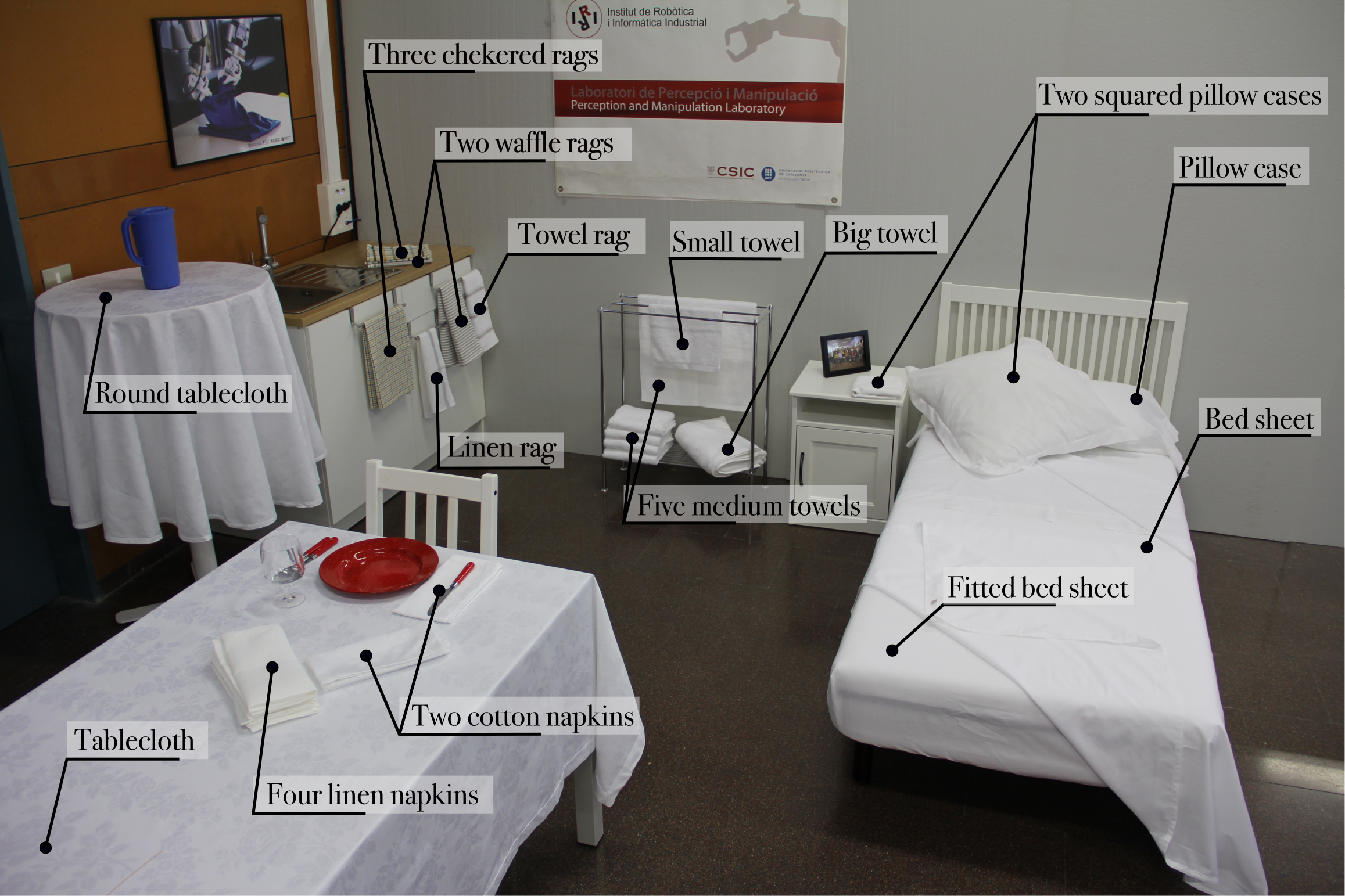

Objects characteristics
The following table picks up the physical properties of the objects as their dimension, weight and % of elasticity under tension.

Data set
In addition to the physical object set, we provide some data for a more detail overview of the objects. This small dataset includes RGB and Depth images of all the objects in different configurations, 3D scans of the objects folded and piled and microscopic images for a detailed view of the yarn type of the objects.
Download
The data is available for download:
- RGB dataset: Download link
Example color images for medium towel:
| FLAT | HANGING | FOLDED |
|---|---|---|
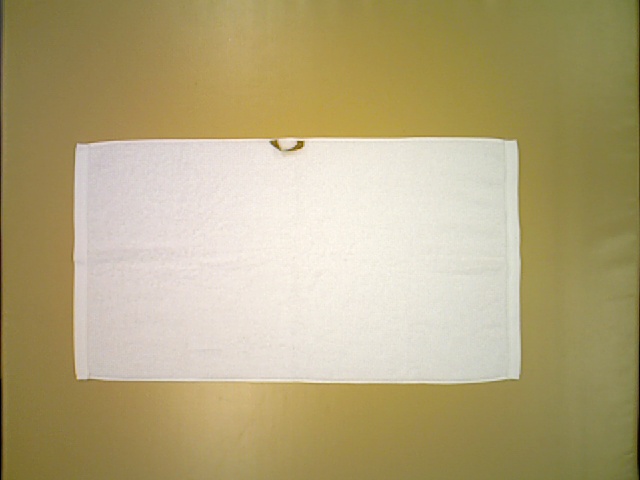  Click images to enlarge Click images to enlarge |
  Click images to enlarge Click images to enlarge |
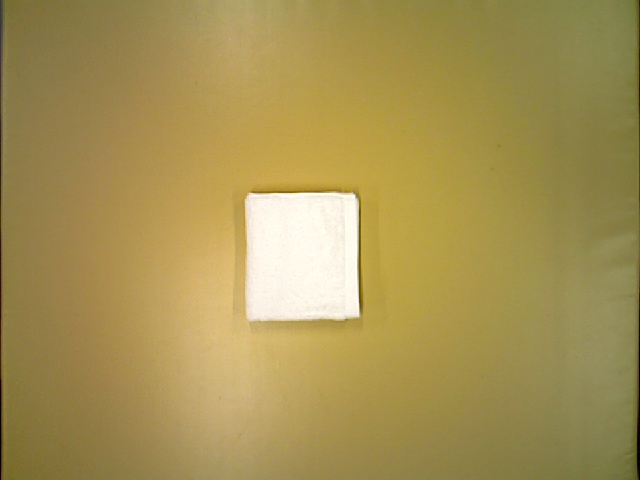  Click images to enlarge Click images to enlarge |
Example 3D models for medium towel:
| FOLDED | PILED |
|---|---|
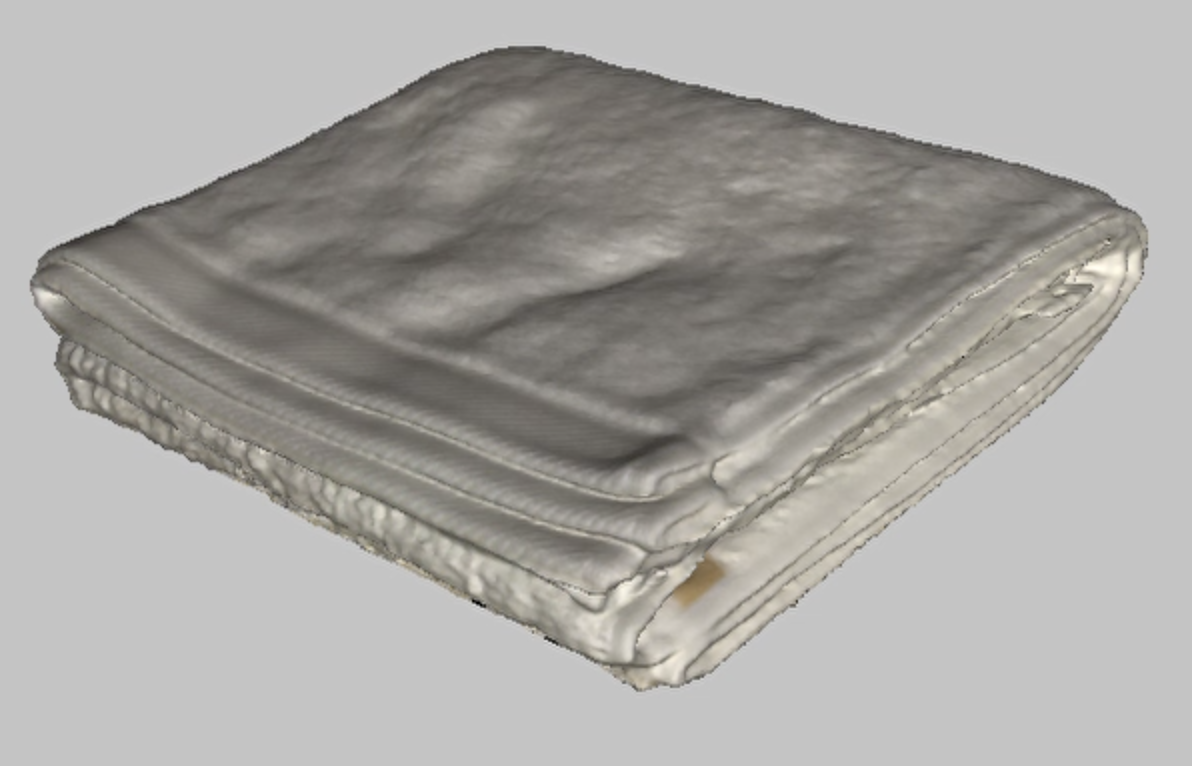  Click images to enlarge Click images to enlarge |
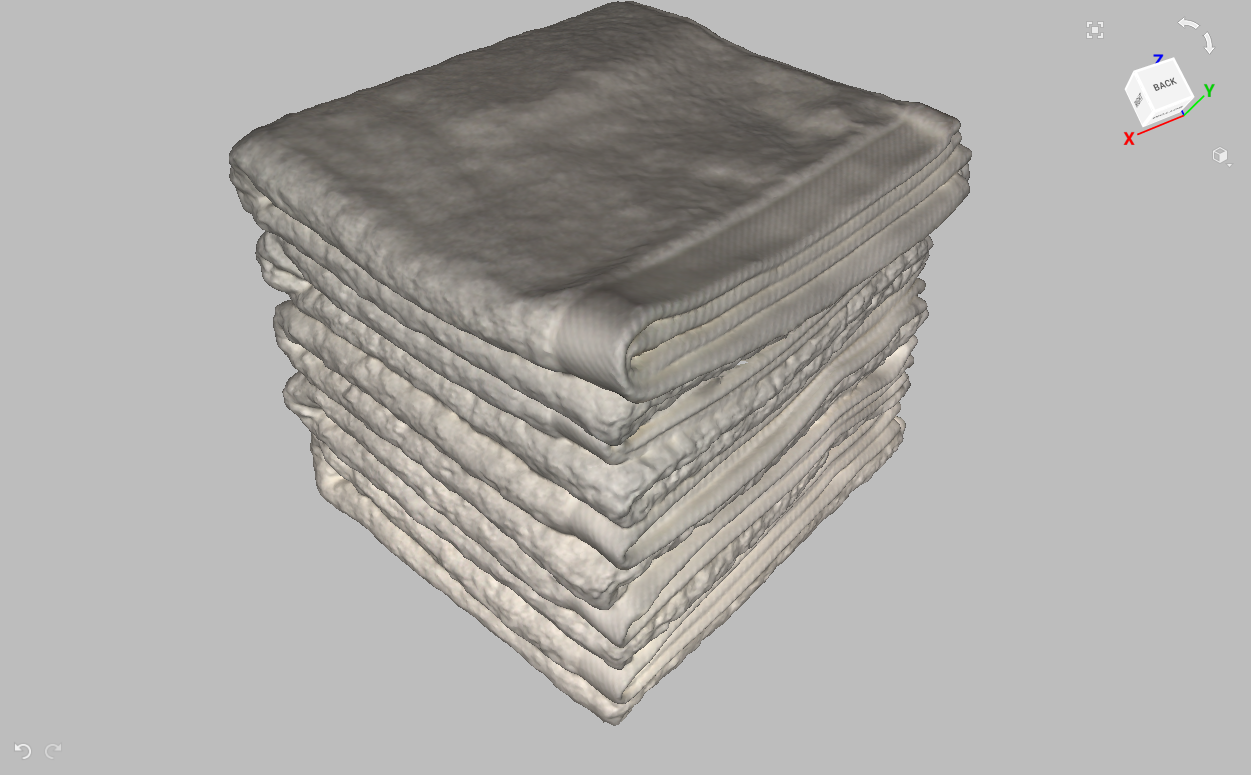  Click images to enlarge Click images to enlarge |
| LINEN RAG | COTTON NAPKIN | BEDSHEET |
|---|---|---|
  Click images to enlarge Click images to enlarge |
  Click images to enlarge Click images to enlarge |
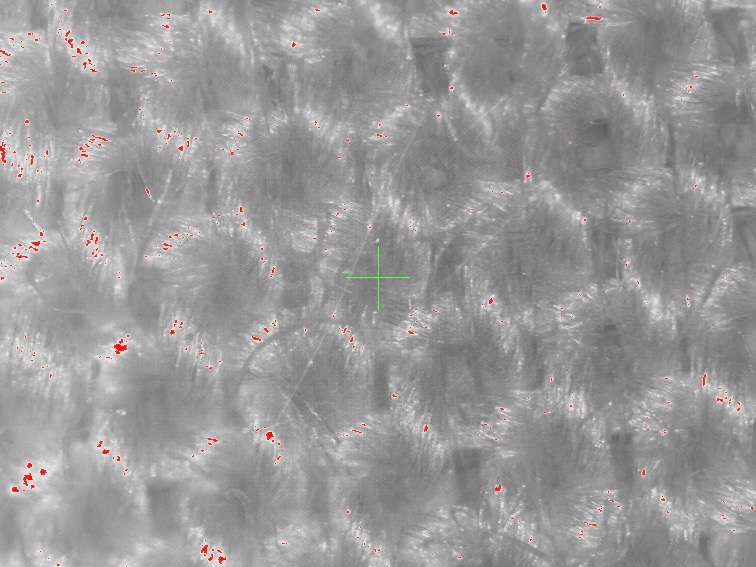  Click images to enlarge Click images to enlarge |
Additional data
Initial configurations
Cloth state in space is determined not only by its position and orientation but also by its configuration as it can adopt infinite configurations. The following list collects the most relevant ones that are used as initial or final states in cloth manipulation tasks.
- Flat
- Folded
- Hanging:
- Hanger
- One corner
- Two corners
- Crumpled
Cloth manipuilation tasks
The main claim of this cloth object set is the standarization of the objects in cloth manipulation tasks for benchmarking purposes. We propose some of them that can be performed with the objects provided, spanning diferent complexity levels according to the object used and the type of manipulation required.
- Folding/Unfolding
- Piling/Unpiling
- Pick & Place
- Spreading
- Bed making
- Pillowcase fitting
Maintenance
The object set comes with their original package. All the objects will be folded in particular ways and include three types of tags that are required to cut. Some initial steps should be followed once acquired the object set. In addition, as textile properties may change depending on the treatment and use you give to them, we defined a list of do's and dont's:
- Cut tags: Cut the three type of tags that are attached to the cloth flush to the hem making sure of not damaging the cloth.
- Ironing: As the object come folded in particular ways, some ironing to remove this folding lines is recommended for performing some tasks (as folding or spreading)
- Washing: It is not permitted to wash the objects as it can drastically modify its properties according to the washing techniques.
- Dyeing: For simplifying perception it is allowed to dye relevant parts of the objects using as long as it does not modify the fabric properties. To do so it is recommended to use textile markers.


Practical examples
As showcase on how to use the objects in the set and the guidelines preented in the related article, we include a video with an example for a proposed cloth manipulation task (Pick&Place), where we used the recommended objects for this task (kitchen rags).
Pick&Place task
Citation
I. Garcia-Camacho, J. Borràs, B. Calli, A. Norton and G. Alenyà. Household Cloth Object Set: Fostering benchmarking in deformable object manipulation, in IEEE Robotics and Automation Letters, vol. 7, no. 3, pp. 5866-5873, July 2022, doi: 10.1109/LRA.2022.3158428.


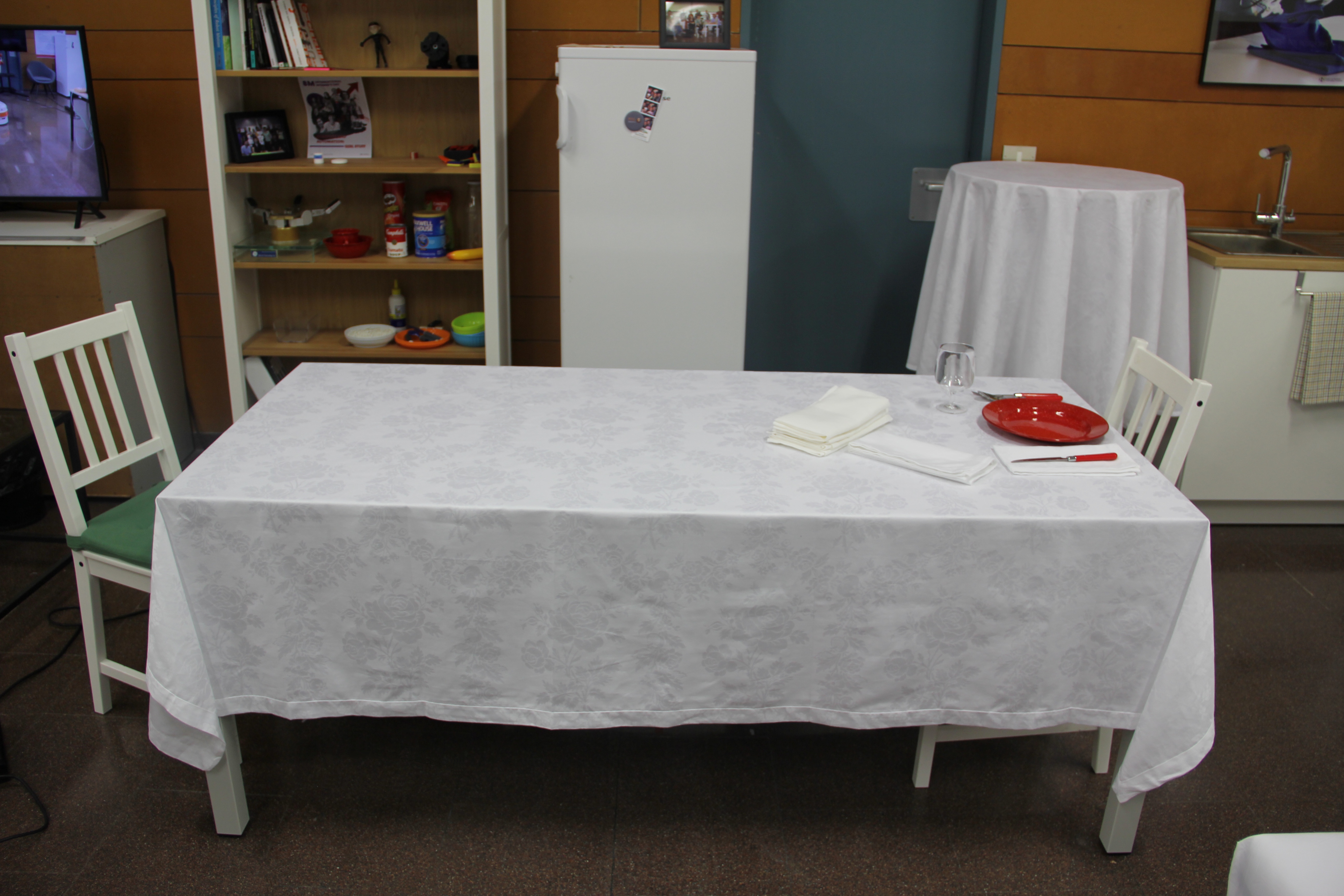


 93 4015791
93 4015791  igarcia (at) iri.upc.edu
igarcia (at) iri.upc.edu